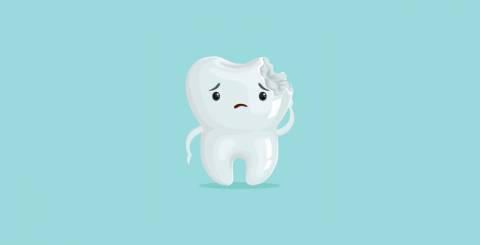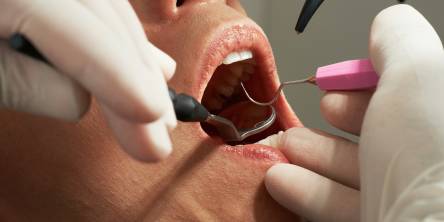8 Debunked Myths About Tooth Decay

Tooth decay, commonly known as dental caries or cavities, is a common oral health problem that affects people of all ages. While much has been discovered about the causes and prevention of dental decay, numerous myths still exist. In this article, we will debunk eight common myths about tooth decay and provide accurate information to help you maintain a healthy smile.
Myth 1: Sugar is the sole culprit
One of the most common misconceptions about cavities is that sugar is the only culprit. While sugar is an essential component in the development of cavities, it is not the only one. Tooth decay occurs when acids produced by bacteria in the mouth destroy the protective enamel covering of teeth.
These acids can be created by a variety of carbohydrate sources other than sugar. Starchy foods, such as crackers, bread, and chips, can also contribute to the development of acids, which can lead to tooth decay.
Myth 2: Only children get cavities
Tooth decay is not just a problem for children; adults may get cavities as well. Adults can have tooth decay due to various factors such as poor oral hygiene, dry mouth, gum recession, and certain medical problems, but children are more vulnerable due to their developing teeth and less careful oral hygiene habits. Regular dental check-ups and adequate oral care are essential for preventing cavities at any age.
Myth 3: Cavities are always painful
Contrary to common beliefs, cavities often don't cause pain at all, especially in the early stages. At first, the deterioration may only damage the exterior enamel layer, which doesn't have any nerve endings. The decay can reach the more sensitive inner layers of the tooth and produce pain as it goes further into the tooth. Regular dental check-ups are crucial for detecting cavities in their early stages, when they may not be causing pain.
Myth 4: You can "heal" cavities naturally
Even though the concept of treating cavities with natural methods has gained popularity, it is crucial to highlight that cavities can't be reversed or repaired on their own. The damaged tooth structure is unable to heal once a cavity has formed.
While proper oral hygiene and fluoride use may result in some minor remineralization, the progression of cavities cannot be fully reversed without professional dental treatment, which usually includes removing the damaged part and restoring the tooth with fillings. If the cavity is deep enough to reach the roots of the tooth, your dentist can perform a root canal procedure.
Myth 5: Brushing harder removes more plaque
Brushing your teeth forcefully can seem to be a good way to eliminate plaque, but this is a common misconception. The truth is that brushing with too much effort can damage the enamel and irritate the gums, leading to additional oral health problems. Instead, use a soft-bristled toothbrush and gentle, circular motions to eliminate plaque without damaging your teeth or gums.
Myth 6: Dental sealants are only for children
Dental sealants are thin protective coatings that are placed on teeth's biting surfaces to prevent cavities. While dental sealants are usually associated with children, adults can also benefit from them. Adults who are prone to cavities, particularly in the deep grooves of molars, might benefit from sealants, which give an extra layer of protection from decay-causing bacteria and food particles.
Myth 7: If there's no pain, there's no problem
Pain is not usually an accurate indication of oral health. Cavities, as previously mentioned, can form without producing severe pain. Other dental conditions, such as gum disease or infections, may not produce pain at first but can have devastating consequences if left untreated. Regular dental check-ups are critical for recognizing and resolving possible issues before they become serious.
Myth 8: Mouthwash can replace brushing and flossing
Although mouthwash can be a useful supplement to your oral hygiene routine, it can't replace the basic processes of brushing and flossing. Even though mouthwash can help decrease bacteria and freshen your breath, it doesn't physically remove plaque and food particles from your teeth and gums. Brushing twice a day with fluoride toothpaste and flossing every day is still necessary for optimum dental health.
Similar Articles
Maintaining your oral health is important not only for a bright, confident smile but also for your overall well-being.
The desire for a healthy smile drives approximately 4 million people toward teeth straightening procedures. When it comes to straightening teeth, lingual braces offer a discreet alternative to traditional braces and clear aligners.
As we grow older, our dental needs evolve significantly. The carefree days of childhood tooth fairy visits transform into the more complex world of adult dental care. After age 25, many adults begin to notice changes in their oral health.
Missing teeth can cause a wide range of oral health issues. Nonetheless, over 120 million Americans are missing at least one tooth, and the figure is anticipated to climb as time passes.
A dental emergency doesn’t make an appointment. It shows up unannounced and unapologetic, usually in the middle of the night or during a meal that was supposed to be fun
A dental emergency can strike fast and without warning—during dinner, in the middle of the night, or just before a big meeting.
A wide range of factors can have a direct effect on your oral health. A balanced diet is essential, as is good oral hygiene and regular dental examinations. Many individuals think that nutrition alone can't improve oral health.
The results of wearing Invisalign aligners look stunning, and they are way more convenient than traditional braces. However, no one speaks about what it feels like to wear the same pair of traces around 22 hours a day
Temporomandibular Joint Disorder, commonly known as TMJ, is a condition that causes pain and dysfunction in the jaw joint and surrounding muscles. This disorder can arise from various factors, including teeth grinding, arthritis, jaw injuries, poor posture, or stress.









